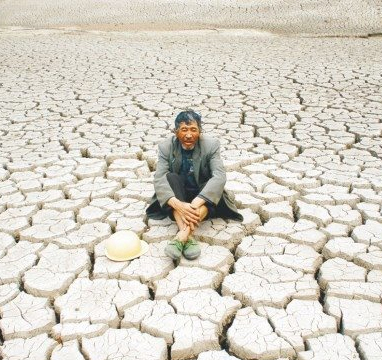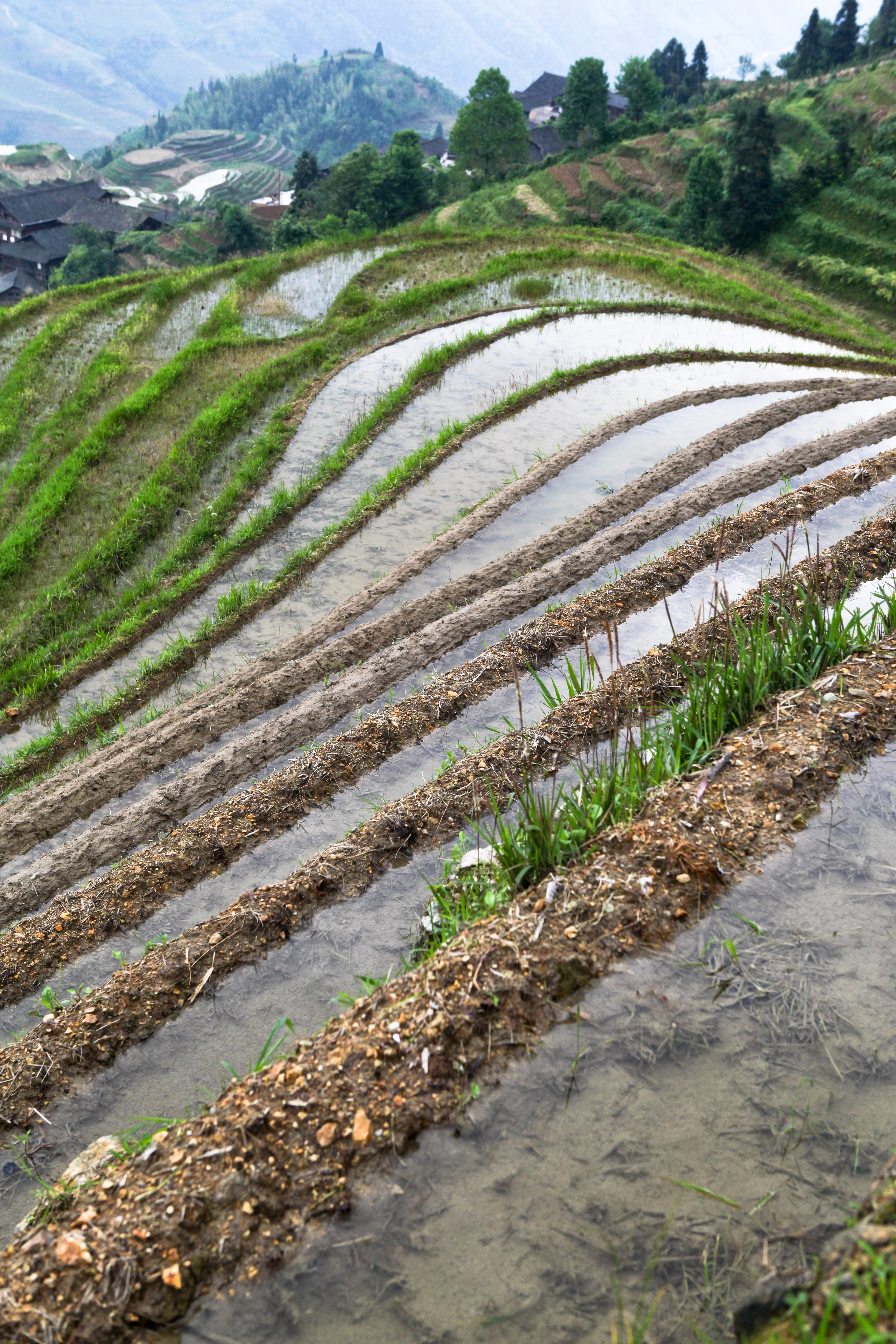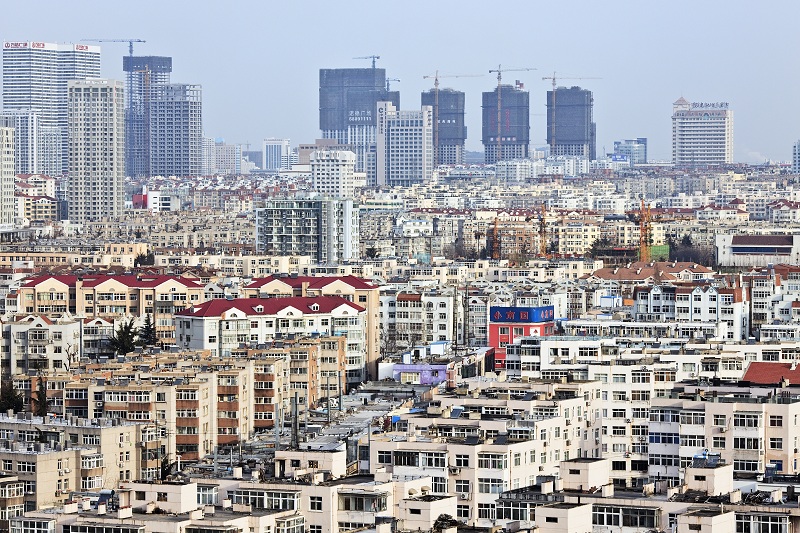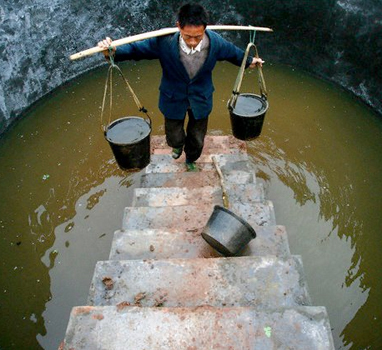How China is Tackling its Water Challenge
Introduction

China faces a severe water shortage. Its current water per capita is one quarter of the world average. This per capita water availability will decrease in the coming decades as China’s population peaks at between 1.4 and 1.5 billion people by 2030. China’s water usage per capita may be low by international standards, but it is expected to grow by between 40 and 50% by 2030. Factors such as higher living standards, increasing urbanization and further industrialization are driving water demand.
The water that China does have is often badly polluted. An estimated 70% of China’s rivers and lakes are currently contaminated and 300 million people drink water tainted with inorganic pollutants such as arsenic, excessive fluoride, untreated factory wastewater, agricultural chemicals, leaching landfill waste, and human sewage. China’s water is also inefficiently consumed, compounding its water challenges. 45% of water destined for agricultural use is lost before it even reaches crops. Only 40% of its industrially used water is recycled, compared with 75% to 85% in developed countries and water lost from urban plumbing leaks accounts for 18% of total urban water withdrawals.
Moreover, China’s water is unequally distributed throughout the country. The Yangtze River basin and areas to the south receive 80% of China’s naturally available water resources to support only 54% of its population, 35% of its arable land, and 55% of its GDP, while the north gets just 20% of China’s water. Deforestation, overgrazing and unsustainable agriculture have destroyed local ecology in many parts of China, affecting China’s overall rainfall, and exacerbating China’s age-old challenges of drought and flooding. To meet its growing water demands, especially in the north, China is depleting its underground aquifers, lakes and river systems at untenable rates. As water becomes scarcer, competition for water is increasing between agriculture and industry as well as among China’s growing cities and different regions of the country. This trend will only continue in the coming years; by 2009, surveys revealed that 58.3% of river water, 49.7% of lakes, 79.5% of reservoirs and 38.7% of wells were of quality necessary to be deemed adequate water sources. China remains particularly opaque and is reticent about releasing regular and up-to-date water statistics.
China has tried to solve its flooding, drought, and water scarcity problems through hydro-engineering projects such as the Three Gorges Dam and the South-North Water Diversion Project. Yet hydro-engineering alone will be unable to create sufficient water supplies to meet China’s future demand. China will need to improve the management of its water resources and the legislation governing its use. Perhaps most importantly, Beijing will need to increase the price of water to better reflect its scarcity value, allowing for the economic restructuring that this higher cost will cause. Repairing China’s ecology will also be essential. A healthy ecology will not only aid the prevention of desertification, with all the water loss that such environmental damage causes, but it will also help to maintain upstream eco-systems, which are essential for the long-term supply of good water sources. China will also need to upgrade the efficiency of its water delivery systems to agriculture and to its cities, and to improve the efficiency utilization rates in industry. Environmental protection will be essential in ensuring the water that China does have is potable. China must clarify its environmental protection laws, improve enforcement and increase fines. Without implementation of such measures, water scarcity risks limiting China’s future economic growth. Water scarcity could also challenge China’s political and social stability. Increasing illness caused by polluted water is driving up healthcare costs and generating more internal dissent. In 2005, the Chinese government acknowledged that 50,000 environmentally related “mass incidents” (a euphemism for protests) occurred, many of which were sparked by water degradation.
Interestingly, the Chinese Committee of Political and Legislative Affairs also acknowledged about the same amount of “mass incidents” (about 50,000) in 2013 as they did nearly a decade ago. The reality, however, is that environmental mass incidents have been steadily increasing: from 1996 to 2011, environmental protests increased at an average rate of 29% per year, spiking up nearly 120% in 2011 alone. The scale of the protests is also increasing, with around half of all “mass incidents” involving 10,000 or more people.
The South-North Water Diversion Project

Historically, China has sought to solve its water scarcity problems through reliance on large infrastructure projects. Indeed, many of China’s top leaders are trained engineers, including Hu Jintao, who is a trained hydraulic engineer. Mao Zedong is reputed to have said in 1952, “the south has a lot of water, the north little. If possible, it is okay to lend a little water”, apparently acting as the spur for building what is now called the the South-North Water Diversion Project. When completed in 2050, the $62 billion mega-aqueduct is projected to divert 44.8 billion m³ of water yearly from the Yangtze to the north. The project will follow three routes. The eastern route will transfer 14.8 billion cubic meters of water yearly from the lower Yangtze, via the ancient 1800 km Hangzhou to Beijing canal, to Jiangsu, Anhui, Shandong and Hebei provinces as well as to the city of Tianjin. It is now projected to be completed in 2013 or 2014. The central route, begun in December 2003, will divert 13 billion m³ of water from the Danjiangkou reservoir on the Han River (a Yangtze tributary) to Beijing, Tianjin and other cities. It is scheduled to be completed in 2014. The western route would transfer water from the upper reaches of the Yangtze tributaries across the Qinghai-Tibet Plateau through the earthquake prone Kunlun Mountains via a network of tunnels into northwest China. Given its technical difficulty, the western route has not yet been given official approval and it is possible that it will be quietly shelved. It is expected that as many as 400,000 people might be displaced by the projects overall, though this would be fewer if the western route were scrapped.
Overall, the South-North Water Diversion Project faces many logistical challenges, the most important of which is ensuring that the water that does reach the north is sufficiently pollution-free to be usable. The eastern route, for instance, crosses 53 heavily polluted river sections. Clean-up efforts and water treatment facilities on this route alone will account for about 40% of the total aqueduct cost. If effectively implemented, it will be one of the most comprehensive water clean-up operations ever seen. 379 pollution control projects including wastewater treatment plants and wastewater recycling facilities are slated to be constructed, and major sources of industrial pollution such as paper mills are being shut down. Nevertheless, the clean-up process continues to be challenging.
Water Desalinization
China is also investing heavily in water desalinization in order to increase its water supplies. Research into water desalinization began in 1958 and more than 20 seawater desalination projects have been constructed which currently desalinate 600,000 m³ of water a day. China aims to produce as much as 3 million m³ of desalinated water daily by 2020, mainly for use in the north of the country. Desalination, however, is expensive and energy-intensive, and also requires water for its production. For these reasons, it cannot be considered to be a serious solution to China’s water shortages.
In 2012, the Chinese government outlined their policy goals for the next three years, ending at the conclusion of 2015. The government hopes to reach 2.2 to 2.6 million cubic meters or water per day, a far cry from the 660,000 cubic meters currently produced per day in China, but still possible given that plans exist to bring another 1.4 million cubic meters of water production online in large-scale desalination plants.
As of 2014, China had expanded its efforts in water desalinization with a total of 75 desalination plants, with nine more under construction. Though this technology may not be the most efficient at providing coastal cities with drinking water, these plants supply water that is used in coastal factories, sewage, and other wastewater management solutions, thereby allowing more drinking water from lakes, rivers, and reservoirs to be directed towards individual use. In the last decade alone, 60 desalination plants were built to run on seawater reverse-osmosis technology, producing 348,000 cubic meters of water per day, and an additional 11 plants were designed to utilize low temperature multi-effect distillation and produce a further 222,300 cubic meters per day.
Water Management
Ultimately, China will need to tackle its water scarcity issues not just by generating more supply, but by more efficiently managing and using its existing water resources. China’s water resource management system is highly fragmented. Multiple institutions have responsibility for China’s water resources, including data and information collection, hydro-infrastructure construction, environmental protection, and agricultural, urban and industrial development. There are frequent overlaps between these departments which raise administrative costs and exacerbate water’s “Tragedy of the Commons” problem. In other words, while China recognizes nationally the need for clean, well-managed water, it is in the interest of each user locally to consume water in whatever way will maximize their own short-term economic gain. This frequently gives China’s water management agencies conflicting priorities. Regional governments, for instance, often sacrifice water quality to protect local industries and jobs; they tend to focus on the water within their administrative areas, while failing to look at China’s water needs as a whole. Those considering water use in agriculture are often focused on accessing the water necessary to maintain agricultural yields. Those looking at the environmental protection of river basins try to limit the water drained from the river eco-systems. A failure to address the problem in a joined-up way persists.
This individualistic approach to the water supply in China, combined with local government corruption, has led to large-scale industrial dumping into lakes, rivers, and other aquifers. Often these waste products are, or are in large part, made up of heavy metals like cadmium or chromium that have been linked to increased risk of cancer. A recent scandal in 2011 involved the Lüliang Chemical Industry Company, which was found to be storing 288,400 tons of untreated chromium byproducts only a few feet from the Nanpan River, whose waters flow west and eventually join with those of the Pearl River. The company had been disposing of waste in this manner since 1989, and had gone as far as hiring divers to secretly dump metal into mountain reservoirs in order to reduce metal treatment and detoxification costs. Chromium levels in the river were 2,000 times China’s legally permissible standards. Effective progress in water management remains relatively slow due to ongoing and pervasive corruption that still sways local officials.
Water Legislation and Enforcement

Not only are water governing authorities fragmented, but laws governing the management of China’s water resources are still being developed. Historically, China’s water laws have been ambiguous and lacking in effective enforcement mechanisms. They have had a bias toward decentralization, with local government agencies often having a determinative voice in water issues within their region. This has resulted in widely varying levels of water-law enforcement, corruption and confusing standards for industries. Indeed, some water legislation reformers have been advocating greater centralized regulation. They point to the success of centralized management in helping to restore at least some perennial flow in the Yellow River delta. In the late 1990s, its downstream flow disappeared annually for over 200 days, because upstream provinces were drawing on the river too heavily. Beijing began limiting water allocations to each of the provinces, so downstream provinces had sufficient water. Today, the entire length of the Yellow River is monitored in real-time by data collection from dozens of monitoring stations along the length of the river. The system is designed to check and manage pollution, drought and flood control, while enforcing fair distribution of scarce water resources among the nine provinces that share the waterway. Engineers can regulate the river’s flow by opening or closing a network of automated sluice gates and monitoring devices. This system is currently undergoing an upgrade which will make it the most advanced water rationing system in the world by the time of completion which is expected to be around 2015.
Indeed, recent water legislation stresses a greater move toward a unified management of water resources. This legislation emphasizes the importance of a balance between water resources, the still-growing population, economic development and the environment. It also focuses on improved efficiency in water use and it strives to set a foundation for greater transparency, equity and efficiency in the access of and payment for water by all levels of the economic spectrum. It advocates that allocation, distribution and regulation of water resources should be increasingly made through water-drawing permit systems where users are allocated and charged for water according to sector quotas, taking into account annual water-availability conditions and the sustainability of river basins, lakes and groundwater. The legislation also attempts to make clear distinctions as to who is responsible for the quality of water in each of China’s regions and to ensure that each of those responsible works to minimize pollution and improve overall water quality. To achieve improved water quality, recent legislation also specifies the need for setting up data and information systems at all levels, and to make data gathered available to stakeholders. Indeed, in 2007, Beijing’s Institute of Public and Environmental Affairs launched its online water database, allowing public access to water quality and pollution data, including corporate regulatory breaches. Yet, this move toward better information access has been tempered by Beijing’s conflicting and simultaneous instinct to prevent the independent gathering of information on China’s water, especially regarding its trans-boundary rivers, ostensibly to safeguard China’s national security.
The 2008 Law of the People’s Republic of China on Prevention and Control of Water Pollution ties the performance evaluation of public officials, at least in part, to their meeting of water and environmental targets. It also increased monetary sanctions against enterprises discharging wastewater illegally and specified the amount of chemical oxygen depletion caused by agricultural run-off allowed in waterways. In a significant legal development, it also allowed, for the first time, class action suits to be brought against polluters.
Several decisions made at the Third Plenum also show a greater commitment in dealing with corruption in local and village governments. Officials in environmentally damaged areas will no longer be expected to meet the same GDP targets as those in other provinces, and local government actions will be monitored in an attempt to reduce the prevalence of companies bribing towns to look the other way as they pollute rivers and water sources that ultimately make their way into China’s largest rivers.
Water Pricing, Water Rights and Efficiency
Ultimately, the most important step in solving China’s water scarcity will be raising the price of water. Water is highly subsidized by the central government, often making it effectively almost free for users, creating no incentive to save water. In 2009, the average price of water per cubic meter was $3.01 in Germany, $2.37 in the UK, $1.02 in South Africa and Canada, $0.74 in the US and $0.31 in China. Of 19 major economies, only India had cheaper water tariffs. Five years later, the price of water per cubic meter rose to $3.18 in Germany, $2.41 in the UK, $2.05 in Canada, $1.46 in the US, and $0.38 in China. Prices do not seem to be ending their upward trend anytime soon.
Higher water prices are likely to generate a significant restructuring in China’s economy. Higher water prices will encourage farmers to plant crops that are less water-intensive and will encourage more efficient irrigation. Indeed, growing urban and industrial water demands may eventually lead to the elimination of winter wheat in northern China as the higher cost of water forces the shift to higher-valued uses that produce more jobs and income per water unit. Currently, 1000 tons of water produce 1 ton of wheat worth $200, whereas industry yields $14,000 of economic output for the same amount of water. Reducing China’s grain production would reflect a significant shift in the decades-old policy of 95% self-reliant grain production, and would have a real impact on global grain markets. It would also spur urbanization as farmers migrate to cities in search of new employment.
Higher water prices would also encourage factories to recycle more of their water. In the special case of the North China Plain, it is likely to check the overexpansion of some high water consuming industries. Currently the region produces 20% of China’s steel, 10% of its power, and 14% of its paper, all industries which use water heavily and cause severe pollution. This would also make the cost of water treatment more feasible as it would become more economical to process and recycle water than to dump it untreated into the rivers. Higher water costs would also make living in water-scarce cities more expensive, potentially discouraging immigration into these areas. It would foster improved efficiency of its water delivery systems to agriculture and to cities.
Such a move may also check pressure on Beijing to tap new coal supplies, particularly the enormous coal reserves in the dry north. Without further water transfer schemes, such as the controversial – and possibly unachievable – western route of the South-North Water Diversion Project, there will not be enough water to mine the northern coal reserves and still develop the modern cities and manufacturing centers that China envisages for the region. The fresh water needed for mining, processing, and consuming coal accounts for the largest share of China’s industrial water use, over a fifth of all the water consumed nationally.
Higher water prices will also help control the scale of the South-North Diversion Scheme, serving to minimize the impact on the Yangtze River. Having the cost of the scheme added into the price of water for end-users will encourage them to use the water more sparingly. Ma Jun has estimated that the cost of cleaning up the northern Huai River system and of running its industry sustainably was greater than the total annual value in production that the industry within the Huai River system generated. Economic progress has brought more people to the river valleys, so that the area now supports 1.5 times the national average. After 1949, mainly for flood control, 5100 large and small-scale reservoirs were constructed along the upper reaches of the Huai waterway and more than 10 major flood control retention reservoirs were built. Without the huge hydro-engineering in the Huai River Basin, the area would not have been able to sustain so many people. Rapid development, however, made previous hydro-engineering projects inadequate. Beijing responded by building new hydro-projects to expand water supplies further. In what has become a vicious cycle, Beijing now faces the need to divert water from the southern Yangtze to support the people and the economy in the area. Ultimately, China’s desire for development is infinite, but its water resources are finite. Unless water pricing reflects its true scarcity value sooner rather than later, China’s lack of water will put the brakes on its rapid economic development.
Enforceable water rights will also be important to reducing China’s overall water wastage. Currently, even with the recent legislation, it is still not clear who holds many water rights and what benefits these rights provide. Ideally, China needs to establish a nationwide water rights program, leaving enough clean water so its eco-systems and aquifers are sustainable. Permits should be issued to each water user, with pricing at a level which encourages increased water productivity. Creating a market to sell or lease these water rights will advance water productivity further. Those who do more to protect the river and other water basins should have greater rights. This includes those provinces and regions near the waters’ sources. The provinces could then profit by selling rights, instead of wasting water on parched land and inefficient industrial projects. Appropriate incentives for water saving technologies and behaviors also need to be developed. For instance, a tariff system could be implemented in which people pay higher bills when they consume more than a set quota.
Authorities have been slow to raise water prices because of their fears about how the higher costs will affect China’s poor. Recent research has shown, however, that lower income Chinese often get little benefit from subsidies as, ultimately, low water costs mean that they frequently receive water that is highly polluted. Nevertheless, the government remains concerned with inflation, always a hot issue in China, and this adds to the pressure to maintain low water prices despite the arguments in favor of raising them; it is unlikely that the poorest in society would welcome a price increase even if it were in their own long-term benefit in terms of improving the quality of their water supply.
Pollution

Despite China’s efforts over the last three decades, water pollution has spread from the coastal to inland areas and from the surface to underground water resources. Essential to controlling China’s water pollution is the strengthening of law enforcement to improve compliance by industries and other polluters. Overall compliance with China’s environmental laws remains low. Yet, strengthening environmental protection is a multi-faceted process which not only requires raising water prices and establishing clearer water rights, but also necessitates the continued development of water protection legislation, the further advancement of China’s judicial system, greater financing and staffing of China’s Ministry of Environmental Protection (MEP), and making public a more rigorous collection and analysis of water data. Economic incentives such as pollution levies and fines have to be rigorously enforced. Overall, pollution fines should be increased. Lawsuits should be initiated against polluters and those most hurt by damaged public goods such as river basin ecosystems should have greater rights to demand compensation. State subsidies could be given to small towns and villages to help them to construct adequate water treatment facilities. Those waste-water treatment facilities that are constructed need to be continually monitored to ensure they remain operational and in compliance. China’s Tenth Five-Year Plan (2001–2005) mandated, for instance, the construction of thousands of new waste water treatment plants, yet a 2006 survey by SEPA (the State Environmental Protection Agency, the forerunner of the MEP) revealed that half of the new plants actually built were either not operating or were operating improperly. Corruption will also need to be tackled. Lax environmental codes are often rarely enforced and easily avoided by bribing officials. Tackling corruption will likely be done most effectively by linking compensation and performance figures to environmental protection as well as economic achievement. This would make it in the personal interests of officials to perform in the environmental arena, mitigating the “Tragedy of the Commons” conundrum, though this would also represent a significant shift in government behavior.
Future Trends
China’s water challenges are becoming too big for Beijing to ignore. China’s Twelfth Five Year Plan (2011-2015) projects record levels of water use, rising to 620 billion m³ by 2015, up from 599 billion m³ in 2010. Its traditional response to growing water demand – building large hydro-engineering projects in order to increase supply – will no longer be sufficient to meet the water demands of China’s agriculture, industry and cities in the coming decades. As a result, China will begin to implement new policies in order to better manage its water resources and to reach its 2015 goals of cutting water consumption per unit of value added industrial output by 30%, reducing arsenic, lead, cadmium, chromium and mercury levels by 15% from 2007 discharges, reducing ammonia nitrate fertilizer runoff by 10% and its corresponding chemical oxygen depletion by 8%. The plan also targets the construction of water conservation structures, improved irrigation, and commits to investing in the clean-up of rivers and lakes through the construction of wastewater treatment and recycling pipes.
At the heart of these new policies will be the gradual raising of the price of water throughout China. This trend is already in evidence in many cities across the country. Shanghai, for instance, increased residential water prices 25% in 2009, and another 22% in 2010. Beijing raised the price of commercially used water by 50% in 2010 and expects to raise its water charges to residential users by 24% in stages by 2013. China’s water users have not accepted the rises without discontent and some government officials fear that higher water prices could lead to social unrest, particularly as China is concurrently struggling with inflation. This unrest is due both to poor public education about the extent of China’s water challenges and to public skepticism that higher costs will translate into more effective water management.
Fixing the quality of China’s water will also be a growing priority for Beijing in the future. China needs to improve its water pollution record both by government investment and by encouraging private investment in the water treatment and management sectors. In 2011, for instance, China allocated $606 billion to clean up water and water infrastructure over the next decade. Larger, wealthier cities had already started investing in the water treatment sector, but without government support, smaller cities and rural areas have lacked the means and incentives to make much-needed investments.
Beijing is also explicitly encouraging foreign participation in China’s water markets. Foreign firms invested about $1.7 billion in China’s water sector between 2004 and 2009, with over $500 million being spent in 2009 alone. The investments were in waste-water treatment, municipal and industrial water supply sectors, and in direct investments in China’s water companies. This involvement will continue to expand in the near future.
China will also begin to move more aggressively against significant water polluters. In 2007, maximum fines to individuals or companies who discharge highly toxic pollutants into drinking water resources were raised fivefold to 500,000 RMB (approximately $80,000). Fines for companies who dump industrial residue urban waste into drinking water resources or who store solid waste or other pollutants below the water lines along rivers and reservoirs increased 20-fold to 200,000 RMB (around $32,000). While these are significant increases the fines remain relatively low and there is room for an expansion in this area. Increasingly, enterprises will also be responsible for bearing all costs to contain water pollution accidents and may face fines as high as 30% of the direct economic loss, according to the severity of the incident. Historically, pollution levies have been so low that it has been cheaper to pay penalties rather than to treat discharge. There is a growing realization that this cannot continue.
Litigation against water polluters will also increase, with rulings to progressively penalize those fouling China’s water systems. In 2009, for instance, an Asian Development Bank study determined the number of environmental lawsuits filed in China has increased an average of 25% annually since 1988. Since 2009, the Supreme People’s Court has been encouraging China’s maritime courts to adjudicate water pollution cases brought on behalf of a public interests. Additionally, three specialized environmental courts have been established in the provinces of Guizhou, Jiangsu and Yunnan.
China’s water challenges are daunting and urgent. The array of measures that are needed to more effectively manage its resources is huge. Still, China’s leadership is well aware of the importance of water to continued economic growth and to the health and well-being of its people. Poor water management has toppled many a Chinese government throughout the millennia, a risk to which the CCP is not immune. While progress toward solving China’s water challenges is likely to be uneven, overall it is expected that China’s water management will improve on most fronts over the next five to ten years.












